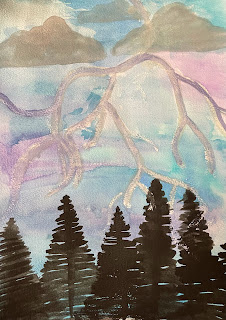Creating Jot Notes About Plants
The grade fours spent this week gathering information about the appearance of a Canadian plant (Sage, Red Cedar, or Sweet Grass), as well as it's Indigenous ceremonial and medical purposes. Students then used their mapping skills to chart where their chosen plant lives and record the preferred growing conditions.
Grade Four Curriculum Connections:
- I can describe the importance of plants to humans and the environment.
- I can locate information about plants in a variety of resources and then identify the key facts.
- I can organize the information found using jot notes.
Students took the opportunity to share their findings with others...
"Sage is considered sacred and is used for smudging."
"Sage can be used for rashes, a sore throat or tea."
"Red Cedar is called the 'Tree of Life'."
"...is mixed with sage to treat infections."
"Cedar can treat aches and pains, it is in my sauna room."
"... has lots of vitamin C and can treat colds."
"Sweetgrass reminds us of love and kindness."
"It can be braided, dried or burned for it's smoke."
"...is used in a sharing circle."
"Can be used for the skin, eyes, coughs or sore throat."
"DO NOT eat or drink it you WILL be sick."
































